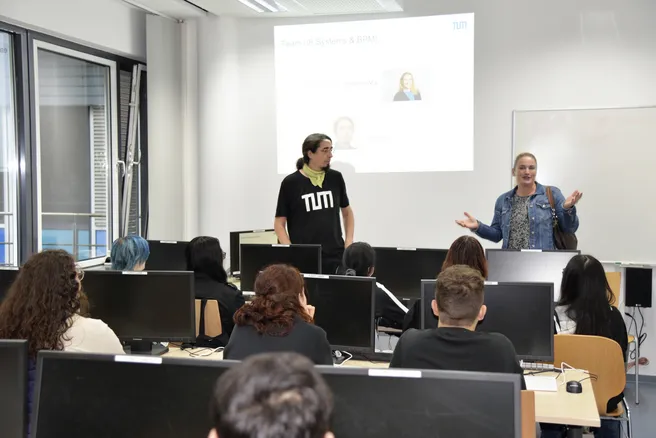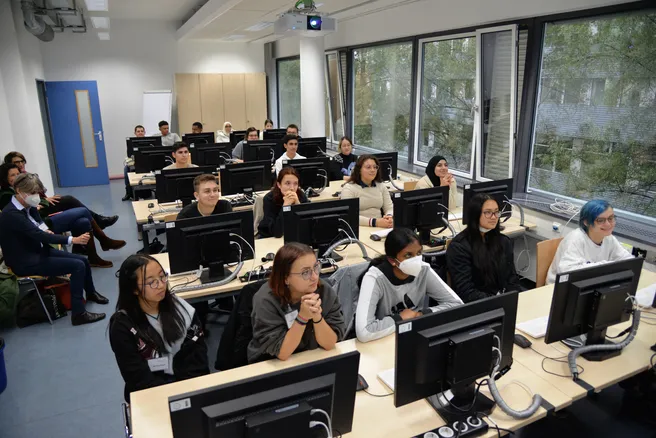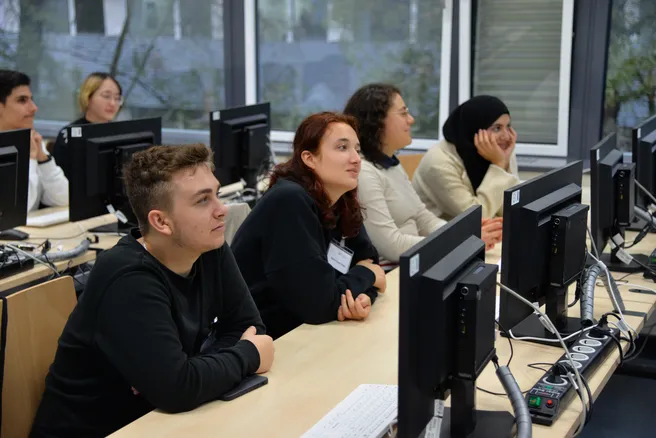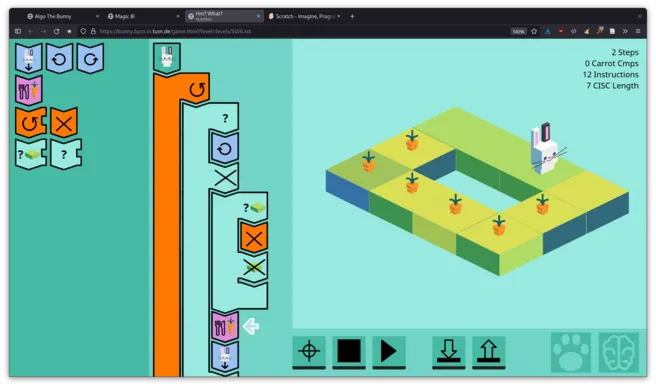By Doris Herrmann
Germany is wasting the talents of the next generation. This is the result of a study by the Stifterverband für die deutsche Wissenschaft and the management consultancy McKinsey. Out of 100 elementary school students from non-academic homes, only 27 will later sit in a lecture hall. By contrast, 79 out of every 100 academic children will enroll at a university. "The educational success of young people in Germany still depends to a large extent on their background and not on their talent," explains Claudia Piatzer, Deputy Member of the Executive Board and Program Manager for the German Student Scholarship at the Roland Berger Foundation. "We want to change that!" With the scholarship, the Roland Berger Foundation is committed to providing more equal opportunities for students. Each scholarship holder is supported according to his or her individual needs, and the educational program includes study groups at partner schools, excursions with volunteer mentors or exciting weekend seminars.
Inspire scholarship holders to study
Three years ago, a scholarship holders' day was launched for older students. At the end of October 2022, 20 young people between the ages of 15 and 19 from a total of eight high schools and technical colleges from Bavaria and Baden-Württemberg interested in computer science visited the Garching research campus. The group was accompanied by Claudia Piatzer, Evelin Boden and Timo Janosch from the Roland Berger Foundation. On the TUM side, Sandra Bogdanovic and Ivonne Hofmann-Sellier were present to welcome the young people. "The goal of today is to give the students a feel for what it means to study computer science at the School for Computation, Information and Technology," explained Sandra Bogdanovic.
Tour of the Garching campus
After arriving at the Garching Forschungszentrum subway station, the first stop was the Faculty Club of the TUM Institute of Advanced Study for a brief meeting. This scientific institution of TUM conducts research in the natural sciences, engineering and humanities. Located on the top floor of the modern building, the Faculty Club offers an optimal view over the Garching campus. Afterwards, lunch was on the agenda at the New Mensa, which opened in 2018 and serves around 7,300 meals a day. The pupils were able to mingle with the university students and explore the food on offer between the salad counter, pizza counter, pasta counter, and the wok counter. Strengthened, they then went to the building of the School of Computation, Information and Technology, where Prof. Stefanie Rinderle-Ma and Dr. Jürgen Mangler from the Chair of Information Systems and Business Process Management welcomed the group.
Introduction to the world of computer science studies
The research assistant Mangler introduced the scholarship holders to the world of computer science studies. He explained the courses of study as well as the application procedure and gave an insight into the different research areas of the professors. The young people were introduced to basic programming concepts such as decomposition of problems into subproblems, runtime estimation and the evaluation of the efficiency of algorithms. Using concrete algorithms, such as traversing mazes, Jürgen Mangler showed that complex problems can be solved by simple and elegant algorithms and discussed the interplay between data and instructions. Using playful programming tasks, the young people were then invited to test their computer science skills in a "bunny game" created at the chair. With the help of simple action blocks, the scholarship holders taught little rabbits to solve certain tasks. For example, the virtual animals had to move forward and eat carrots, some of which were difficult to reach or had to be eaten in a certain order. A total of 21 levels were presented here, some of which were solved by the students themselves.
Visit to the robotics laboratory
After the experience at the computer, a visit to an experimental laboratory was on the agenda. Here, the fellows got to know a collaborative robot. This so-called cobot was specially developed to work together with humans. At the chair of Prof. Rinderle-Ma, it is used for various automation solutions. For example, it can play chess, supply a milling machine with raw material and remove finished parts, but also measure and arrange raw parts.
At the end of the visit, the students were able to experience mathematics and art for themselves in the large main hall: on a carpet, they raced down one of the two metal tubes of the unique parabolic slide from the third floor of the building to the first floor. This design highlight designates a parabola in space and is the largest slide of its kind in the world. The symbol for the compatibility of art and science lets the user overcome 13 meters of height in a few seconds.
Adrenaline rush and new impressions
But it wasn't just the adrenaline rush of the slide that the young visitors took away from their excursion. "Beforehand, I had only studied computer science at school," explains scholarship holder Arina. "Today we heard how many fields there are in research, which I find totally exciting. I would be very attracted to studying computer science here - also because of the good future job opportunities." John and Kenny were fascinated by how simple "coding" can be, for example in the "bunny game" - and how complicated programming the cobot is in contrast. Even if only some of the young people might decide to study computer science at the School for Computation, Information and Technology, the student scholarship aims to broaden their horizons and help them overcome hurdles. "The scholarship holders' day at TUM was simply great. It was an absolute success, because the young people were able to experience how exciting and diverse studying computer science at TUM is. I was personally impressed by the approachable and very empathetic way in which the course content was communicated," says Claudia Piatzer.





